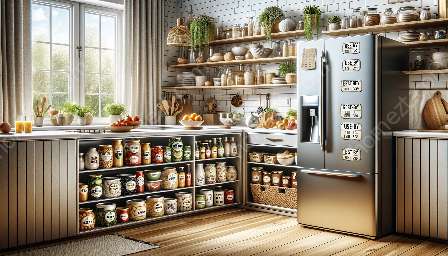Food safety is a crucial aspect of maintaining a healthy and secure home environment. Preventing cross-contamination during food preparation is essential for ensuring that the meals you serve to your family are safe and free from harmful bacteria and pathogens.
Understanding Cross-Contamination
Cross-contamination occurs when harmful microorganisms, such as bacteria and viruses, are transferred from one surface or food to another. During food preparation, cross-contamination can occur through direct contact, contaminated utensils, or improperly stored raw foods.
When it comes to home safety and security, preventing cross-contamination in your kitchen is paramount. By following best practices and guidelines, you can minimize the risk of foodborne illnesses and create a cleaner, healthier environment for your family.
Food Safety in Home Kitchens
Ensuring food safety in your home kitchen starts with proper hygiene and sanitation practices. Here are some key steps to prevent cross-contamination:
- Wash Hands: Always wash your hands with soap and water before and after handling raw food, using the bathroom, and touching any surfaces that may carry bacteria.
- Clean Surfaces: Disinfect countertops, cutting boards, and utensils with hot, soapy water after each use, especially when handling raw meat, poultry, or seafood.
- Separate Raw and Cooked Foods: Use separate cutting boards and utensils for raw and cooked foods to prevent the transfer of harmful microorganisms.
- Store Foods Properly: Keep raw meats, poultry, and seafood separate from other foods in the refrigerator to prevent juices from dripping onto other items.
- Cook Foods Thoroughly: Use a food thermometer to ensure that meats, poultry, and seafood reach safe internal temperatures to kill any bacteria present.
- Be Mindful of Cross-Contamination: Avoid spreading bacteria by using clean utensils and plates when serving cooked food. Do not place cooked food on surfaces that previously held raw foods without proper cleaning.
Home Safety & Security
Implementing food safety practices in your home kitchen is not only essential for your family's well-being, but it also contributes to overall home safety and security. By preventing cross-contamination, you reduce the risk of foodborne illnesses and create a clean, sanitary environment.
Furthermore, teaching family members about proper food handling and cross-contamination prevention fosters a culture of awareness and responsibility, enhancing overall home safety. By instilling these practices, you help protect your family from food-related health risks and maintain a secure and healthy home environment.
Conclusion
Preventing cross-contamination during food preparation is a fundamental aspect of maintaining food safety in home kitchens and promoting home safety and security. By following best practices, such as proper handwashing, surface cleaning, and food storage, you can create a healthier environment for your family and reduce the risk of foodborne illnesses.
Remember, a clean and safe home kitchen is the cornerstone of a secure and healthy home. By prioritizing food safety and cross-contamination prevention, you contribute to a better quality of life for you and your loved ones.

























